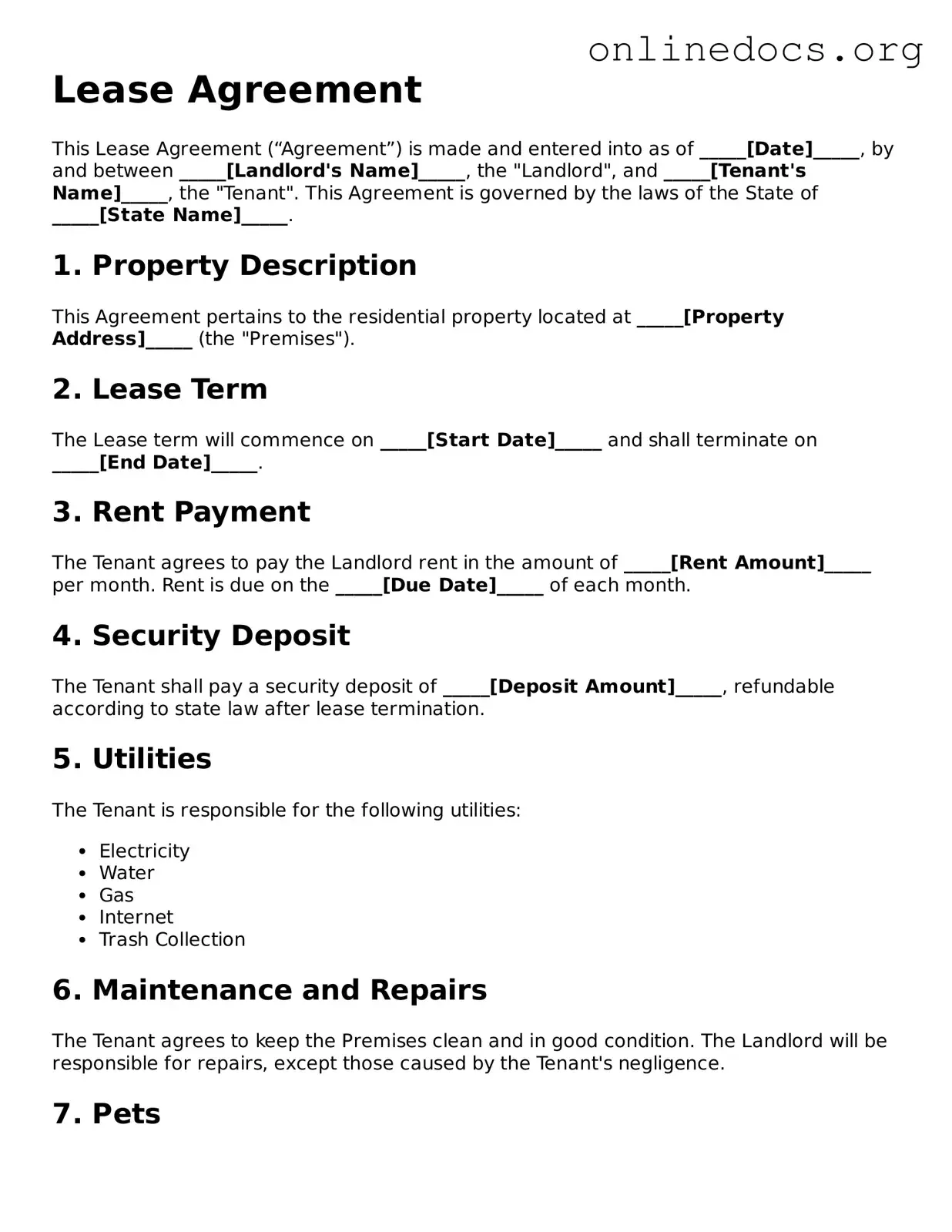Filling out a Lease Agreement form can seem straightforward, but many people make common mistakes that can lead to misunderstandings or even legal issues down the line. One prevalent error is not reading the entire document before signing. It's crucial to understand every clause and stipulation. Skipping this step can result in agreeing to terms that are unfavorable or unclear.
Another frequent mistake is failing to provide accurate personal information. Whether it’s a misspelled name or an incorrect Social Security number, inaccuracies can complicate the leasing process. Landlords rely on this information for background checks and other important processes, so precision is key.
Many tenants overlook the importance of documenting the condition of the property before moving in. Not taking photos or making notes of existing damages can lead to disputes about security deposits when the lease ends. It’s wise to ensure that both parties agree on the property's condition at the outset.
People often forget to clarify the terms of the lease, especially regarding the duration. Is it a month-to-month lease or a year-long agreement? Misunderstanding the length of the lease can create confusion about when to renew or terminate the agreement.
Another common pitfall is neglecting to read the fine print regarding fees and penalties. There may be clauses about late rent payments or maintenance responsibilities that can have significant financial implications. Being unaware of these details can lead to unexpected costs.
Many individuals also fail to ask about the rules regarding pets. Some leases have strict no-pet policies, while others may allow pets with specific conditions. Not clarifying this can lead to difficult situations later, especially if you have a furry friend.
Additionally, people sometimes forget to check the lease for subletting policies. If you anticipate needing to sublet your apartment, it’s essential to know whether the lease allows it. Ignoring this can lead to breaches of contract and possible eviction.
Another mistake is not understanding the security deposit terms. Knowing how much is required, what it covers, and the conditions for its return is vital. Many tenants are surprised when they don’t receive their full deposit back due to misunderstandings about these terms.
Lastly, individuals often overlook the importance of knowing their rights as tenants. Familiarizing oneself with local tenant laws can empower you and help avoid potential conflicts. Understanding your rights can make the leasing experience smoother and more transparent.
